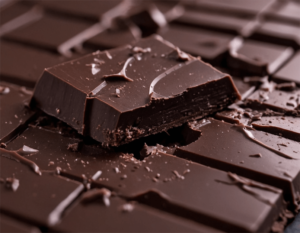That relentless urge for something sweet isn’t just a matter of willpower—it’s rooted in complex biological processes. Understanding why your body is craving sugar can be the first step toward breaking the cycle.
The Biology Behind Your Craving Craving Sugar
Sugar cravings stem from several interconnected systems in your body:
The Blood Sugar Rollercoaster
When you consume sugar, especially in refined forms, your blood glucose levels spike rapidly, triggering:
- A surge of insulin to move glucose from your bloodstream into cells
- The rapid drop in blood sugar that follows (reactive hypoglycemia)
- Renewed hunger and cravings as your body seeks to raise blood sugar again
This cycle creates a perpetual loop of cravings, particularly for quick sources of glucose—like more sugar.
Your Brain’s Reward Pathway
Sugar consumption activates the same dopamine-driven reward circuits in your brain that respond to addictive substances:
- Eating sugar triggers dopamine release, creating pleasurable sensations
- With repeated exposure, you need more sugar to achieve the same “reward”
- Over time, these neural pathways strengthen, leading to habitual sugar-seeking
The Hidden Influence of Your Gut Microbiome
Recent research has revealed a surprising player in sugar cravings—your gut bacteria:
- Certain gut bacteria thrive on sugar and release compounds that trigger cravings
- These microbes can actually manipulate your food preferences to ensure their own survival
- An imbalanced microbiome (dysbiosis) often correlates with increased sugar cravings
Stress and Emotional Connections
Chronic stress drives sugar cravings through:
- Elevated cortisol levels, which increase appetite and specifically sugar cravings
- The temporary calming effect sugar provides via serotonin production
- Established emotional associations between sweet foods and comfort
Breaking the Sugar Craving Cycle
Understanding these mechanisms points to effective strategies for reducing cravings:
Stabilize Blood Sugar
- Include protein and healthy fat with every meal
- Choose complex carbohydrates with fiber that digest slowly
- Maintain regular meal timing to prevent extreme hunger
Reset Your Taste Receptors
- Gradually reduce added sugar intake rather than quitting cold turkey
- Use natural sweeteners like cinnamon and vanilla to enhance sweetness perception
- Allow 2-3 weeks for taste buds to adapt and become more sensitive to natural sweetness
Support Your Gut Microbiome
- Consume prebiotic-rich foods (garlic, onions, asparagus, bananas)
- Add fermented foods like yogurt, kefir, and sauerkraut
- Increase dietary fiber to support beneficial bacteria growth
Strategic Craving Management
- Keep magnesium-rich foods handy (dark chocolate, nuts, seeds)
- Stay adequately hydrated—thirst is often misinterpreted as sugar cravings
- Identify emotional triggers and develop non-food coping mechanisms
Foods That Stop You From Craving Sugar
Certain foods are particularly effective at reducing sugar cravings:
- Chromium-rich foods (broccoli, grapes, whole grains) help regulate blood sugar
- Glutamine sources (bone broth, cabbage, spinach) can reduce cravings during sugar withdrawal
- Healthy fats (avocados, nuts, olive oil) provide lasting satiety
- Fermented foods help rebalance gut bacteria that influence cravings
- Sour foods like apple cider vinegar can help reset taste preferences
Breaking the sugar craving cycle takes time and consistency, but understanding the biology behind your cravings can make the process much more manageable. By gradually implementing these strategies, you can reset your body’s systems and significantly reduce the grip that sugar has on your daily life.
Ready to break free from sugar cravings? Download our free guide with a complete 7-day meal plan specifically designed to stabilize blood sugar and reduce cravings.

